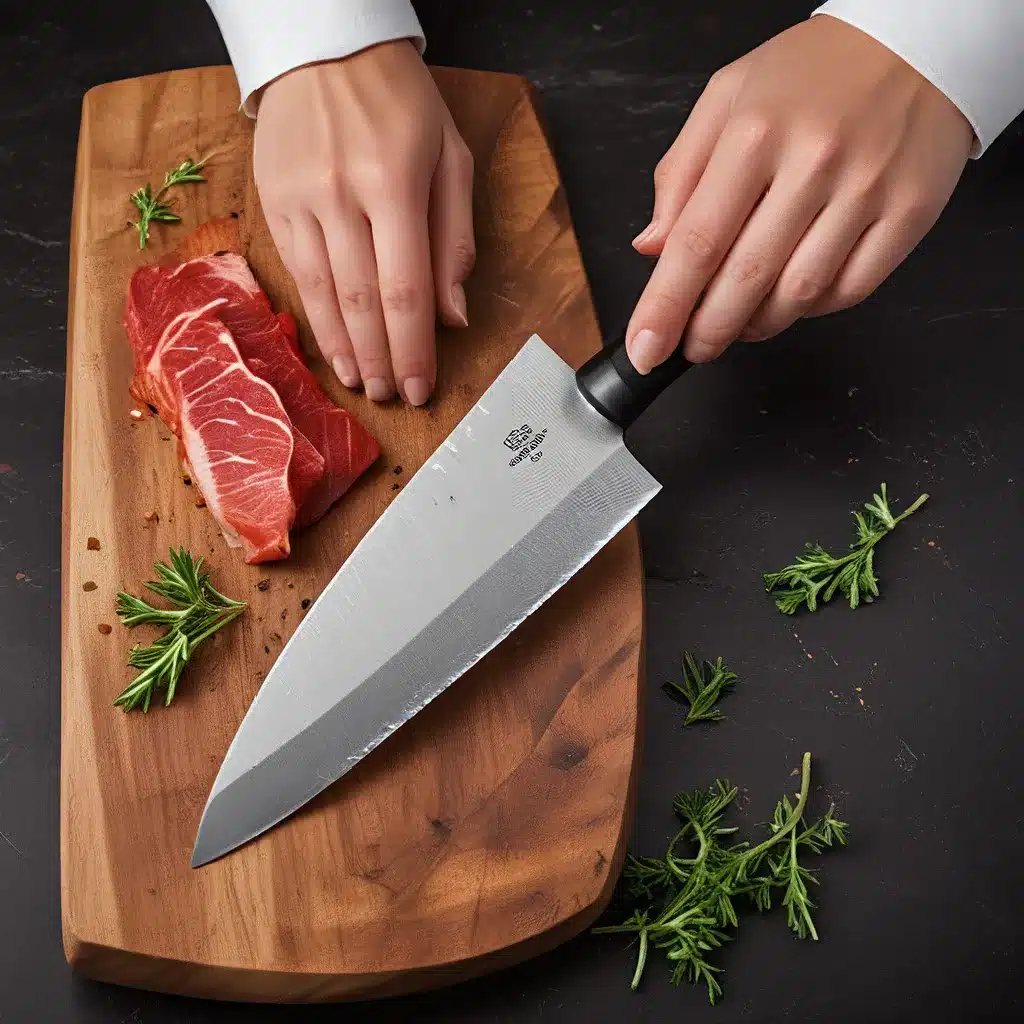
As a passionate home cook, I’ve always been fascinated by the art of wielding a knife. From the satisfying slice of a sharp blade through a juicy tomato to the precision required for delicate mincing, mastering knife skills is the foundation of any gourmet kitchen. Today, I’m excited to share my insights and tips to help you unleash your inner chef and take your culinary prowess to new heights.
The Importance of Knife Skills
Knife skills are not just about looking impressive – they are a crucial component of efficient and effective cooking. When you can confidently and safely navigate your way around a knife, you unlock a world of culinary possibilities. Precise cutting techniques allow you to prepare ingredients quickly, ensure even cooking, and elevate the presentation of your dishes.
Furthermore, honing your knife skills can save you valuable time in the kitchen. No more tedious, uneven chopping or struggling to slice through tough vegetables. With the right techniques, you’ll be able to breeze through meal prep, leaving more time to focus on the fun part – cooking and enjoying your creations.
Essential Knife Cuts
At the heart of gourmet cooking lies a repertoire of essential knife cuts. Mastering these basic techniques will serve as the foundation for your culinary journey. Let’s explore some of the most important cuts you should have in your arsenal:
The Classic Dice
The dice is a versatile and fundamental cut, perfect for uniform-sized pieces of vegetables, fruits, or even proteins. To execute a perfect dice, start by slicing the ingredient into thin, even strips, then stack the strips and cut them crosswise into cubes.
Elegant Julienne
The julienne cut, also known as the “matchstick,” involves slicing ingredients into long, thin strips. This technique is particularly useful for creating decorative garnishes or for quickly cooking ingredients that require even heat distribution, such as stir-fries.
Delicate Brunoise
The brunoise is a finer version of the julienne, resulting in tiny, uniformly shaped cubes. This intricate cut is often used for adding subtle flavor and texture to dishes, such as in sauces or as a garnish.
Graceful Chiffonade
The chiffonade technique involves stacking leaves (such as basil or spinach) and then slicing them into thin, ribbon-like strips. This method is not only visually appealing but also helps to evenly distribute the flavor and aroma of the herbs throughout a dish.
Precise Batonnet
The batonnet cut is similar to the julienne, but the strips are thicker, creating a more substantial shape. This cut is often used for roasted vegetables or as a base for creamy soups and stews.
Mastering these essential knife cuts will allow you to tackle a wide range of recipes with confidence and precision. Remember, practice makes perfect, so don’t be afraid to experiment and refine your technique.
Knife Selection and Maintenance
Of course, no discussion of knife skills would be complete without addressing the importance of having the right tools for the job. The type of knife you use can make a significant difference in the ease and accuracy of your cuts.
Herman Knives offers a wide selection of high-quality, meticulously crafted knives that are designed to elevate your cooking experience. From the versatile chef’s knife to the delicate paring knife, each tool in their collection is built to last and deliver exceptional performance.
Proper knife maintenance is also crucial for ensuring the longevity and optimal performance of your blades. Regularly honing and sharpening your knives will keep them in top condition, allowing you to slice, dice, and mince with ease. Invest in a quality sharpening stone or electric sharpener, and take the time to learn the proper techniques for maintaining your knives.
Knife Safety: A Fundamental Responsibility
While knife skills are essential for gourmet cooking, it’s crucial to prioritize safety. Handling sharp blades requires utmost care and attention. Ensure that you always grip the knife firmly and keep your fingers curled back to avoid accidental cuts. Additionally, maintain a stable and secure cutting surface to prevent the knife from slipping.
Remember, safety is not just about protecting your fingers; it’s about creating a positive and productive cooking environment. By cultivating safe knife-handling habits, you’ll not only safeguard yourself but also inspire confidence in those around you, whether you’re cooking for your family or entertaining guests.
Mastering Knife Skills: A Culinary Journey
The journey to mastering knife skills is one of continuous learning and practice. Each cut, each technique, and each recipe you tackle will help you refine your abilities and develop a deeper understanding of the art of cooking.
As you progress, don’t be afraid to experiment and push the boundaries of your skills. Explore new cutting techniques, try different knife types, and seek out opportunities to learn from experienced chefs or attend cooking workshops. The more you immerse yourself in the world of knife skills, the more your inner chef will begin to shine.
Remember, the path to culinary greatness is paved with patience, dedication, and a willingness to learn. Embrace the process, celebrate your victories, and don’t be discouraged by the occasional misstep. Every experience will contribute to your growth and help you become the confident, skilled cook you aspire to be.
So, what are you waiting for? Unleash your inner chef and let your knife skills take your gourmet cooking to new heights!


